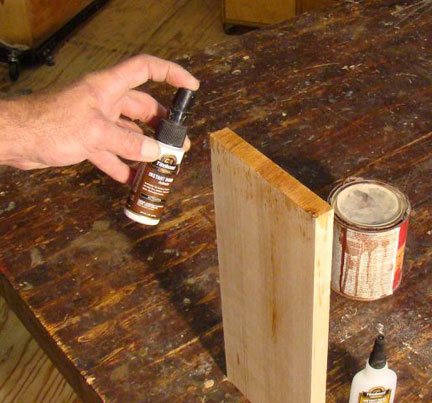
I just ran into a small problem. On my last run to the lumber mill, I got a good deal on a mixed length stack. But it seems that most of the pieces are too short for what I need. I am building a bookcase headboard for a king-sized bed and it looks like I will be two long boards short. These aren’t really structural boards, so I was curious about using a glue-joint router bit to end-join two boards to get the length I need. Any thoughts are appreciated.
Ian Kirby: If the boards are not under much stress, joining them on end is OK. Use biscuits or a spline or ‘scab’ a piece on the back. What you can’t do, usually, is ‘hide the joint.’ It’s not like a butt joint that goes together comfortably. So make a feature of it. One way is to put a slight radius on the edges of both ends of the boards to form a shadow line or put a piece of veneer between them. What you’re aiming to do is create a pattern, and to do this you may even have to make more end joints. You can ‘design your way out of it.’ Be courageous; it’s the way of woodworking.
Rob Johnstone: My thought … don’t do it. Go get the lumber you need and you will be much happier in the long run. Maybe the lumber yard will allow you to trade some of the lumber you have for the longer pieces you need. I believe you should never compromise when it comes to material. My father once told me that if you buy the best quality (insert the product here) you can afford, you only cry once. That truism is especially accurate when it comes to building material.
Ellis Walentine: You can end-join boards in several ways. If structure were an issue, a scarf joint would be the best solution, but it’s relatively difficult to accomplish. In this case, you could use a glue-joint bit as you suggested or simply butt the pieces together with biscuits or a spline. Any flexing of the board, however, is likely to loosen these joints; so be sure you’re fortifying or supporting the joint adequately.
Michael Dresdner: We did lots of that at the YCA Timber panel plant. Standard angled fingerjoint cutters will not only give you a very strong joint, but if the angles are correct, you can actually glue the boards without clamping. When the cutter is made right, the boards can simply be pressed together and the glue left to dry ? and they will not push themselves back apart. Wish I remembered the angle ratio, but I don’t. Getting old has its price. But a good cutter company will know it and will have designed it into their cutters.





